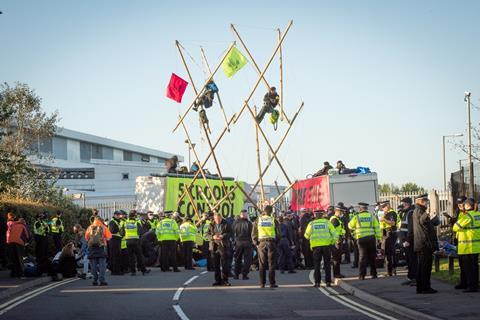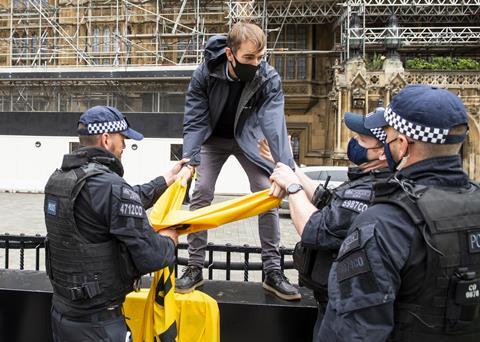Building the necessary political pressure to change the world will not be done simply by pitching good ideas, says Tom Bennett

What happens if you fill a room with architects and invite discussion on the climate crisis? Someone will make the case for being more persuasive with clients. The words “carbon” and “circular” will be used liberally and in various combinations. PAS 2035 may crop up. Many excellent points will be made.
None of what follows is intended to diminish the importance of all of that good stuff. But, in our rush to engage the problem through the prism of our particular role-identity, are we missing a larger point?
Like an architectural project happening backwards, we are mired in detail before we have dealt with the overall scheme of things.
We need a wholesale systemic transformation of almost every aspect of society. Clearly this will necessitate massive and decisive intervention by the state, and a rewiring of the economy. But, given strong inertia and myriad vested interests arraigned against change, how can this be achieved?

Full-time campaigners and activists spend their waking lives pushing climate action up the political agenda. It is worth reflecting on the fact that these dedicated souls are no more responsible for sorting out this mess than any of the rest of us.
Construction professionals may operate within a particular domain which is responsible for a significant chunk of overall emissions. This fact, though, does not exempt us from sharing in a more general obligation to push for a sweeping transformation of society. Fundamentally, the battle for a habitable future will be won or lost in the arena of the political economy.
So let’s ask two questions: what are we tangibly doing to build political pressure for the necessary transformation? And could our skillset assist in those efforts?
In just two weeks of disruptive action in April 2019, Extinction Rebellion achieved significant gains that decades of reports, petitions and immaculately crafted letters to MPs had failed to deliver.
Civil disobedience may not be a panacea, but this approach has also opened an avenue for redeployment of design skills in a way that has little to do with solutionising and everything to do with tackling the implementation bottleneck.
In the case of a tensegrity blockade of Rupert Murdoch’s printers, for example, architectural design was used to call out the corporate media for persistently downplaying the crisis and stymieing action.
Perhaps it is time to adjust the dials: spend a little less time pitching solutions to each other and a little more of our energies supporting movements which are engaged in the crucial work of mandate building. For it is ultimately this that will enable those solutions to happen at the necessary scale.
Tom Bennett is an architect at Studio Bark and a climate activist
Ideas for positive change

This is part of our Countdown to COP26 coverage in the lead up to the world climate conference in Glasgow in November. We will be publishing more big ideas about ways to tackle the climate emergency over the coming weeks and you can find more here.



























No comments yet